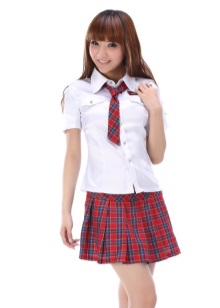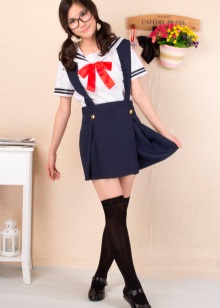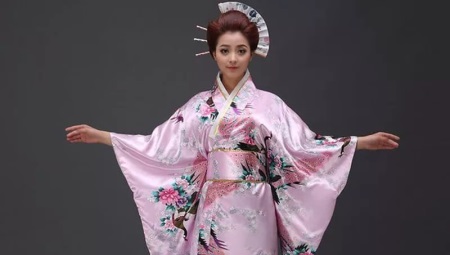Centuries-old history
Country of the rising sun ... How much mystery and grandeur lies in these words! The history and traditions of Japan can be admired endlessly, each time discovering more and more interesting facts. But special attention should be paid to the national Japanese costume, because these unusually beautiful clothes, up to nowadays, delight both men and women all over the world.
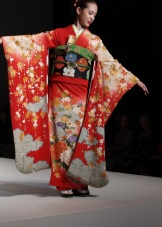
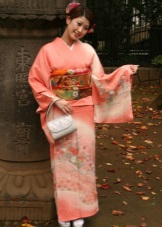
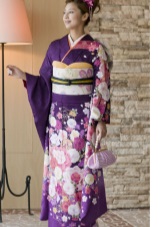
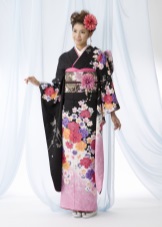
Japanese motifs can be called a real wonder of the world. For the first time, Japanese national costumes were mentioned in their imperishable manuscripts by the sages from the Middle Kingdom. It was China that influenced the formation of many Japanese traditions. This influence, inspired by the culture of Buddhism, did not pass by the design of clothes.
The sixth century AD was marked by the final formation of a traditional Japanese costume that people of the twenty-first century can watch. Formed a kind of "calling card" of Japan - a traditional kimono.
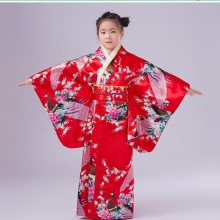
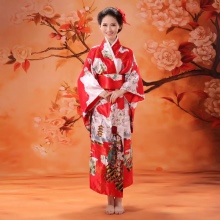
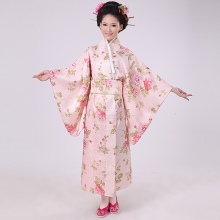
Stages of development of the Japanese costume
The true legislators of Japanese fashion were the actors of the famous Kabuki theater. They needed to constantly improve their clothes, choosing the most suitable and beautiful options for stage images, dance and theater performances. Residents of the city who came to performances noticed new details of the traditional attire and exploited them with pleasure.
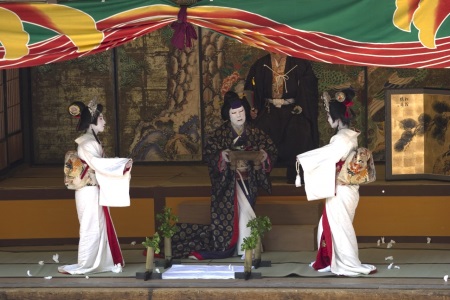
Initially, the peasants had to take on the progress in the development of national Japanese clothing, since noble aristocrats preferred suits whose style was adopted from Korea and China. After several centuries, the Japanese of all classes could not imagine themselves without the traditional kimono, so the poor and rich wore exactly the traditional models.

Time passed, and Japanese clothing was divided into two obvious branches - male and female, because at first all the outfits were universal. Mo and hakama - skirts and pants were invented. Japanese and Japanese reacted negatively to such an innovation, however, the order of the emperor forced them to come to terms with changes in the field of fashion.

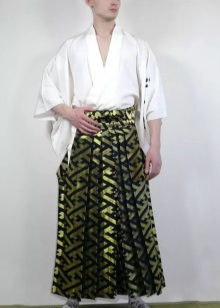

Unique features of traditional Japanese clothing
Women held a special place in Japanese culture. Their main duty was to cause unlimited admiration for men, to please them in every possible way, and at the very first stage there was aesthetic pleasure. Female kimono helped geisha demonstrate their grace and defenselessness, emphasize the dignity of the look.
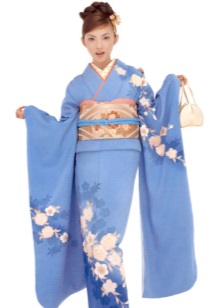
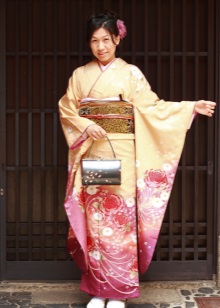
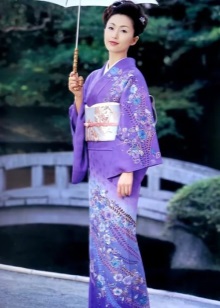
The design of the men's traditional outfit pursued other goals. The costume should be strict, practical and non-marking, as a result of which clothing for Japanese men was made in restrained, dark colors. The patterns in the kimono were still present - they were geometric prints. Less common were plant ornaments and images of animals, fish and birds.
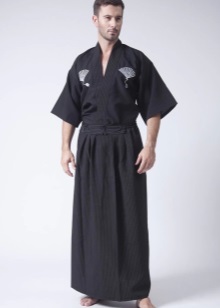
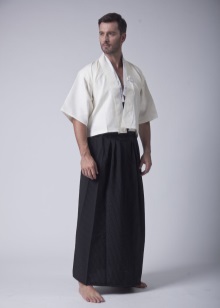
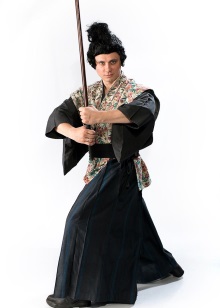
Festive women's and men's outfits looked truly chic. For their design, the brightest shades were used, perfectly harmonizing with each other.
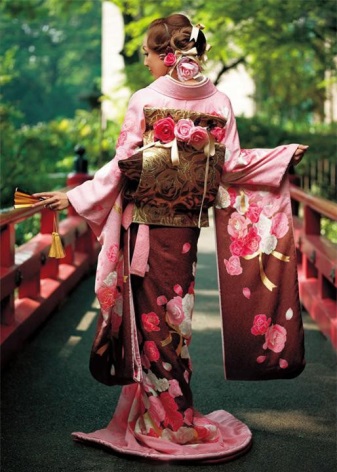
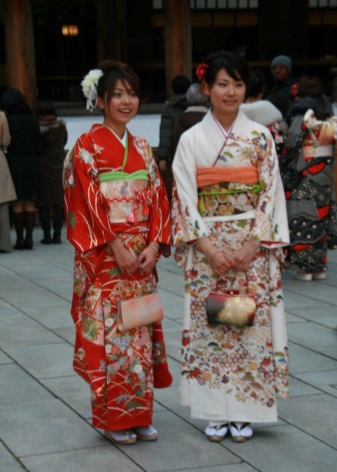
There have always been seasonal trends. In autumn, the girls wore kimonos with drawings of wedge leaves, in the spring pink sakura flowers blossomed on the fabric, and with the onset of winter, clothes were decorated with elegant needles of pine matzo.

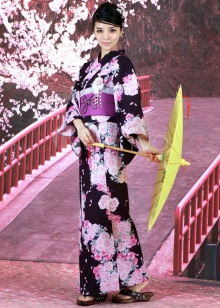
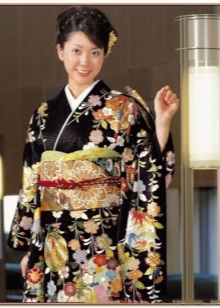
Variety and variety
National Japanese costumes have some differences, depending on the social status of a person, gender and position in society.
- Women's Japanese costume is decorated very seductively and with a share of cunning. The outfit contains several layers of clothing, together giving a design that supposedly accidentally opens the lower products in some places. This is necessary for additional sexuality.
- The underwear is the futano and koshimaki skirts, as well as a wearable shirt called Hadajuban. It is necessary that these products are combined in color with a kimono.
- No traditional women's outfit could do without an obi belt. The Ob has a striking length - a standard model of at least five meters. This length is needed in order to tie complex, but delicious bows. The belt could be made in different colors and decorated with numerous ornaments, which are necessary not only for beauty. Obi reported marital status and social status.
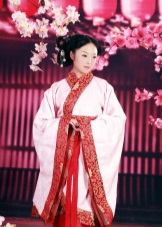
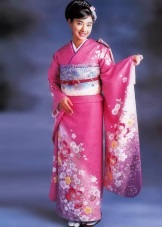
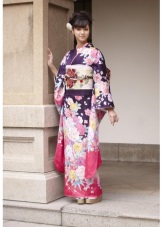

Japanese shoes
For European women, Japanese-style shoes will not seem comfortable. Products for Japanese legs are really specific. The most popular models of national Japanese shoes are dzori and geta.


- Dzori was worn by peasant girls, because this shoe is as simple as possible and does not differ in attractiveness. This woven flat sandals are not sized.
- Geta could afford wealthy Japanese women and professional geisha. Geta is divided into two variations. The first model is equipped with a large wooden block with a recess in the lower part. The second is a wooden bench. The highest geta platform reaches as much as ten centimeters. Shoelaces of shoes are fixed between the index and thumb, holding the foot securely.
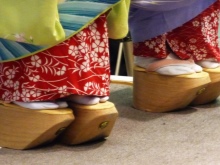
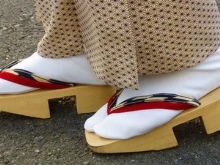

The creation of geta involved the most talented artists, as they needed to be decorated with festive painting. Many pairs of shoes rest in museums - they look so magnificent. People who are knowledgeable in the world of art call the geta a worthy rival of famous paintings.
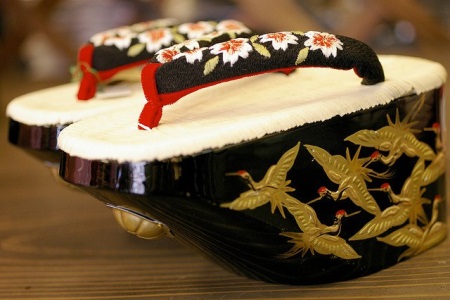
Accessories
Jewelry for the Japanese was not particularly needed thanks to the amazing national costumes. But some accessories in the wardrobe of Japanese beauties were still present.
- Netsuke charms fastened to belts;
- Combs, sticks and chic hairpins;
- Fans.
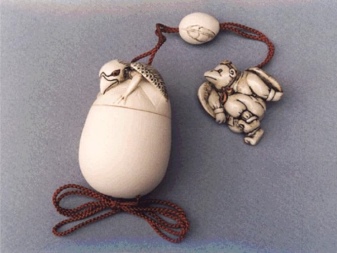

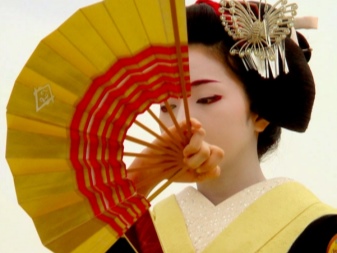
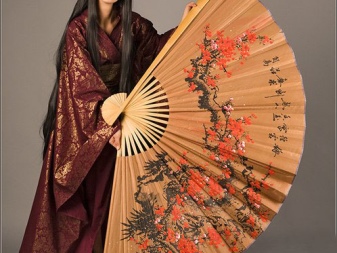
Samurai shape
The samurai costume was the main indicator of the masculinity and courage of the Japanese warrior. Samurai put on special dresses that were available exclusively for their class. Commoners, who dared to wear the traditional clothes of a warrior, were severely punished. But in cases of major holidays, the emperor could allow artisans to appear at the hakama celebration - pleated pants resembling a skirt.
The shape of the samurai consists of two kimonos. The bottom was snow-white. Family emblems were sewn on the upper kimono, showing others around which feudal family the samurai had come from.
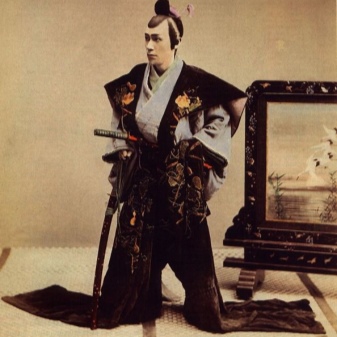
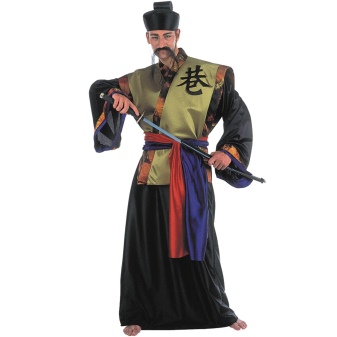
Baby kimono
The national Japanese costume for the girl differs from the adult kimono in pretentiousness and elegance several times increased. The colors of children's dresses are much more picturesque. Prints of products are specific - each drawing is endowed with a special meaning. Patterns are believed to bring good luck to girls.
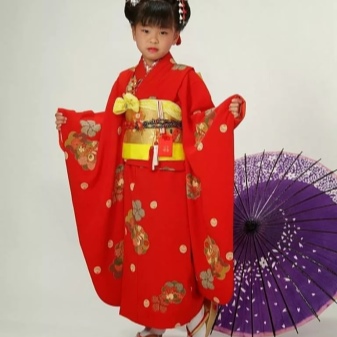
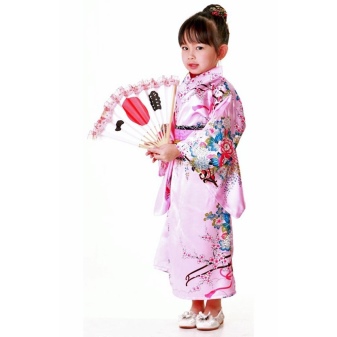
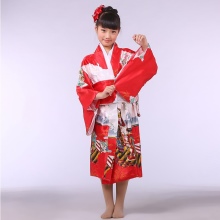
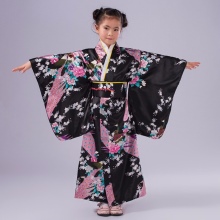
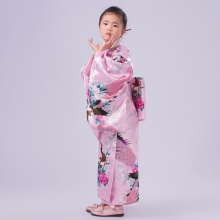
One of the most popular kimono drawings for girls is carps - koi. Many legends are associated with koi, so dress designers have chosen them as the dominant symbol.
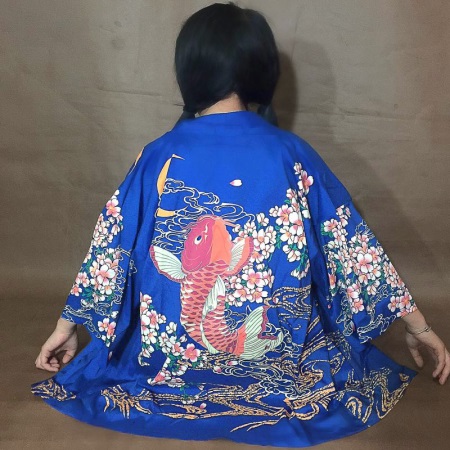
School uniform
Having first appeared on the threshold of elementary school, Japanese first-graders may not be afraid that they will be forced to wear a certain school uniform, but traditional touches in official clothes for schoolchildren exist.
- The uniform for girls in elementary school is a light-colored blouse and a long blouse to the knee. Boys wear black and blue shorts with white shirts.
- High school involves a dramatic change in form. Guys are forced to wear army-style clothing. Girls put on the charming sailor suits worn even by European schoolgirls. This form is called "gakuran." Translated literally, you get a "student from Europe."
- Sailor suit consists of a sweater and pleated skirt. The blouse is decorated with a nautical-style collar. On the blouse is a loop for a red ribbon, which schoolgirls, if desired, are replaced with ties, butterflies and bows.
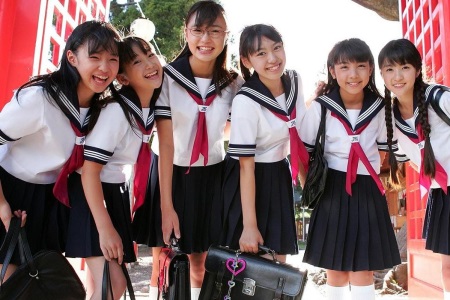
Japanese traditions in the modern world
Traditional Japanese costumes are too complicated to operate, which is why modern active girls cannot afford to wear them all the time. National kimonos are heavy, and some varieties cannot be worn without assistance. You cannot wash clothes by hand or in a typewriter, and dry cleaning services strike a wallet. The Japanese have found a way out of the situation!
Fashion designers were able to significantly simplify traditional clothing, while leaving intact and safe what is most valuable to the Japanese - echoes of the past, penetrating into the present.
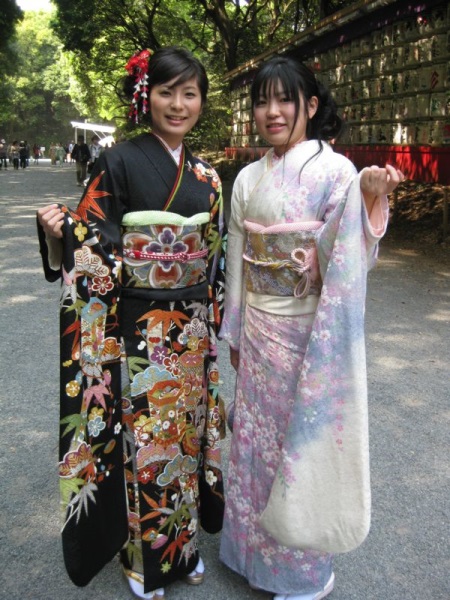
The modified kimono model received the name "Yukata". Previously, this product was considered something like a housecoat, but now the yukata has become a full-fledged street clothes.
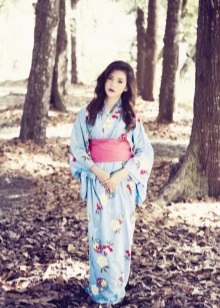
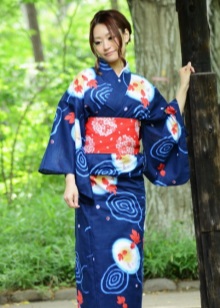
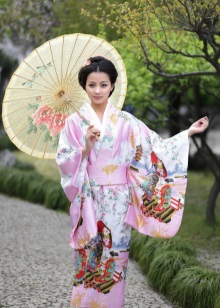
Also, yukata gained wildly popularity among fans of anime. Girls who are keen on cosplay dress not only in a yukata, but also in those very difficult real kimonos if they have to attend a grand festival, a theme party and a photo shoot.
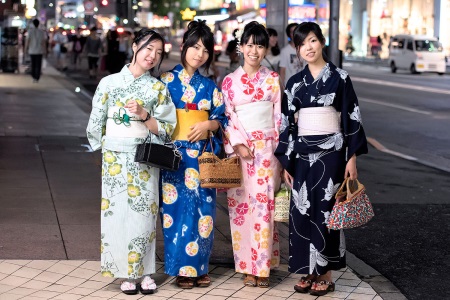
Reviews
Buyers of national Japanese costumes claim that this clothing promotes spiritual development. Anime fans happily put on a yukata, which gives them a feeling of weightlessness, immerses them in an atmosphere of antiquity and fairy tales.
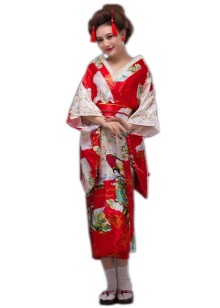
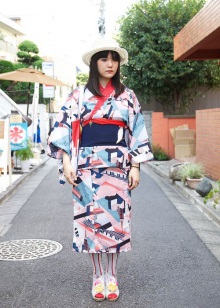
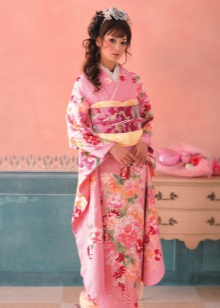

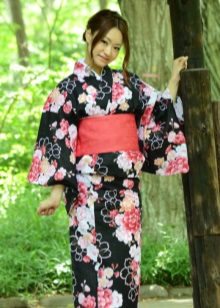
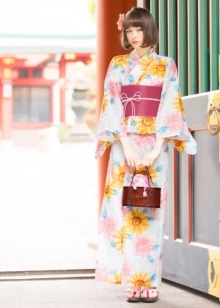
The Japanese school uniform for girls also found loyal fans. In Russian schools, you can often see girls who stand out among the rest of the students with their sailors. The shape is comfortable and beautiful. And what else do young fashionistas need?

